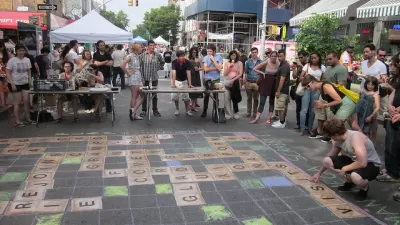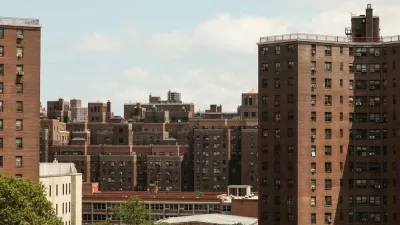Urbanists and their ilk might have been disappointed in the first presidential debate's lack of focused attention to affordable housing, infrastructure, and other issues of importance to cities.

Daniel McGraw provides a critique of the first debate between Hillary Clinton and Donald Trump, focusing on the "several exchanges that might resonate with Americans who spend their days thinking about and working on challenges facing U.S. cities."
McGraw starts with the moment that Clinton "accused Trump of cheering for the housing market collapse 10 years ago," too which Trump replied, in his own words, "That's called business."
According to McGraw's evaluation, "the fact that a presidential candidate sees housing as little more than a commodity without any other economic or cultural implications is very telling in many ways." The fact that many American's probably agree with Trump on this point, according to McGraw, is "why this race has been so hard to figure out."
Among the other subjects that were briefly considered, but without much detail, McGraw lists infrastructure (with Clinton mentioning clean energy and Trump discussing the shortcomings of La Guardia airport). Beyond that, the candidates discussed inequality and racism, but from the frame of policing practices, not affordable housing, environmental justice, or public health. While Clinton suggested criminal justice reform and asked Americans to consider their biases, Trump touted "law and order" and stop-and-frisk.
FULL STORY: Trump and Clinton Debate Over Housing Is Critical to U.S. Cities

Montreal Mall to Become 6,000 Housing Units
Place Versailles will be transformed into a mixed-use complex over the next 25 years.

Planetizen Federal Action Tracker
A weekly monitor of how Trump’s orders and actions are impacting planners and planning in America.

DARTSpace Platform Streamlines Dallas TOD Application Process
The Dallas transit agency hopes a shorter permitting timeline will boost transit-oriented development around rail stations.

Study: 4% of Truckers Lack a Valid Commercial License
Over 56% of inspected trucks had other violations.

Chicago Judge Orders Thousands of Accessible Ped Signals
Only 3% of the city's crossing signals are currently accessible to blind pedestrians.

Philadelphia Swaps Car Lanes for Bikeways in Unanimous Vote
The project will transform one of the handful of streets responsible for 80% of the city’s major crashes.
Urban Design for Planners 1: Software Tools
This six-course series explores essential urban design concepts using open source software and equips planners with the tools they need to participate fully in the urban design process.
Planning for Universal Design
Learn the tools for implementing Universal Design in planning regulations.
City of Mt Shasta
City of Camden Redevelopment Agency
City of Astoria
Transportation Research & Education Center (TREC) at Portland State University
US High Speed Rail Association
City of Camden Redevelopment Agency
Municipality of Princeton (NJ)





























